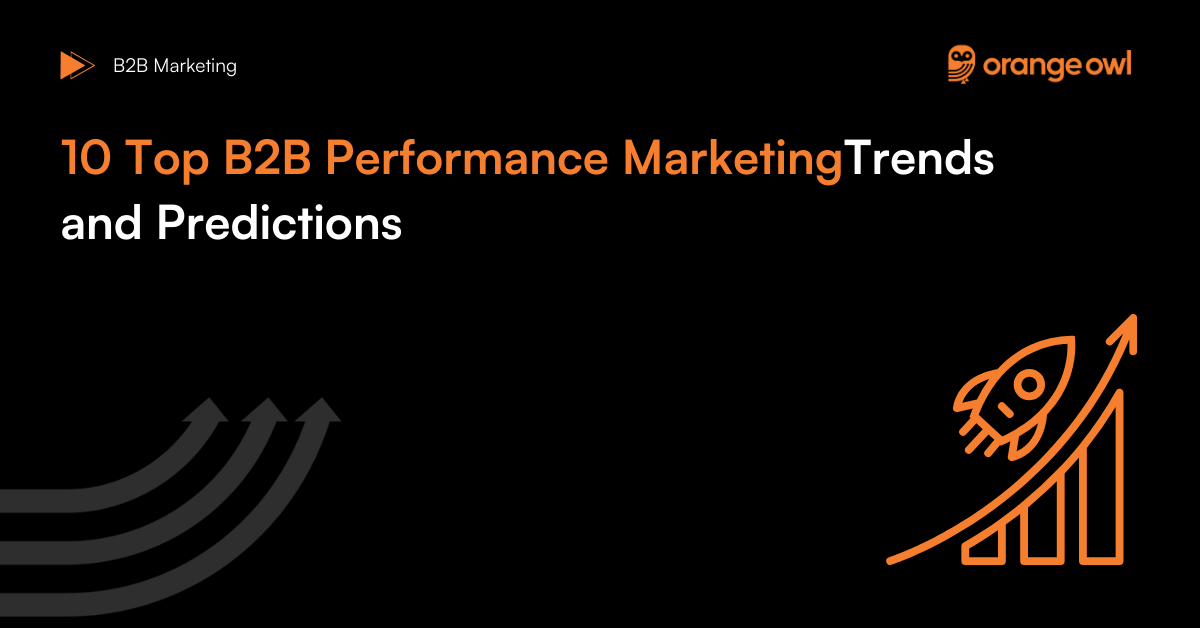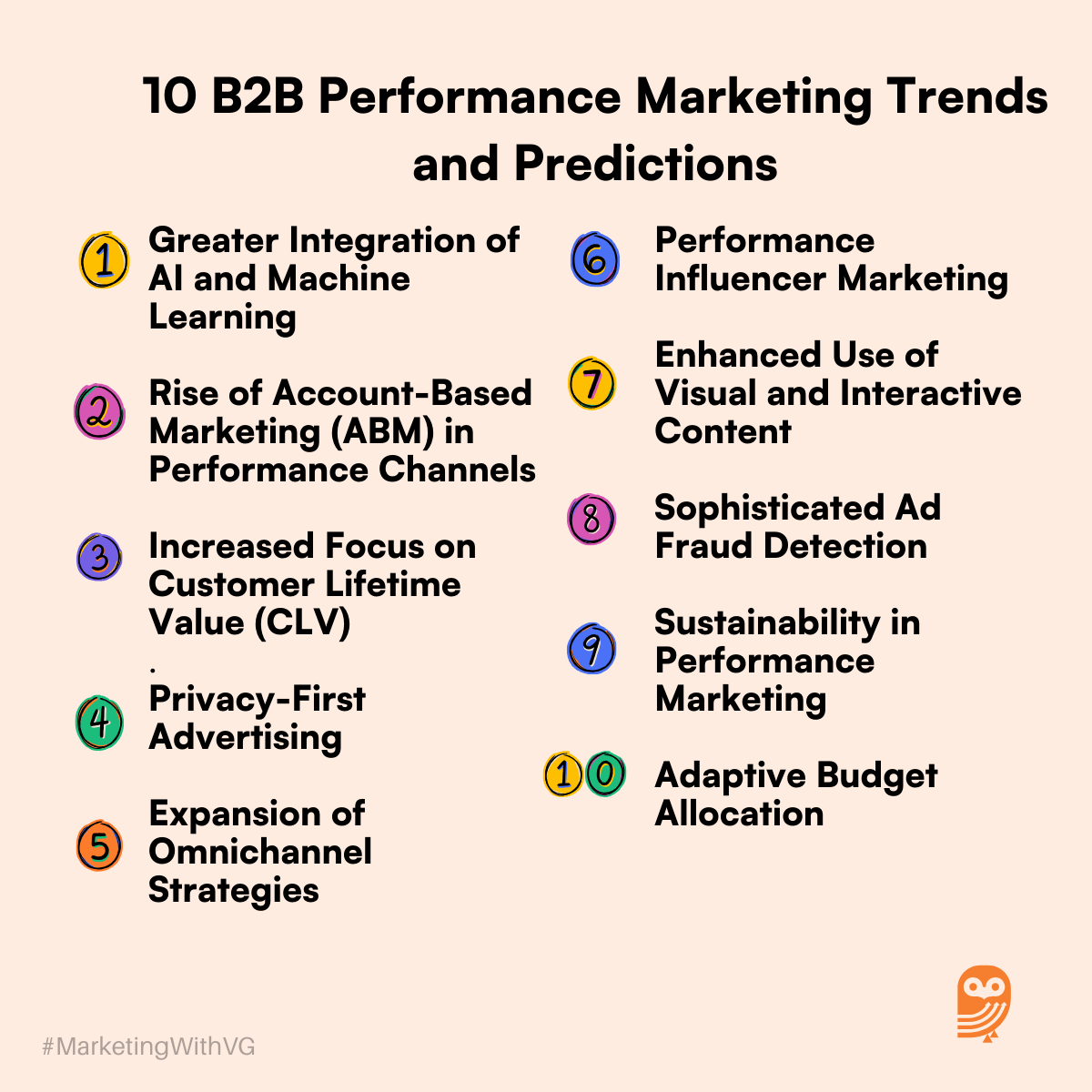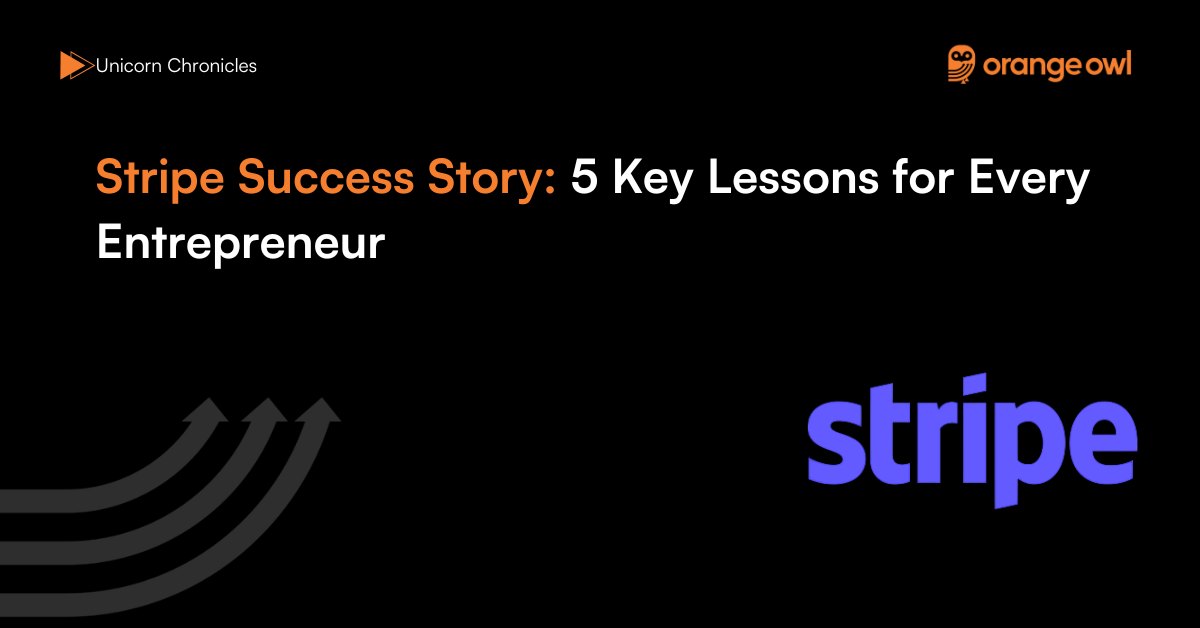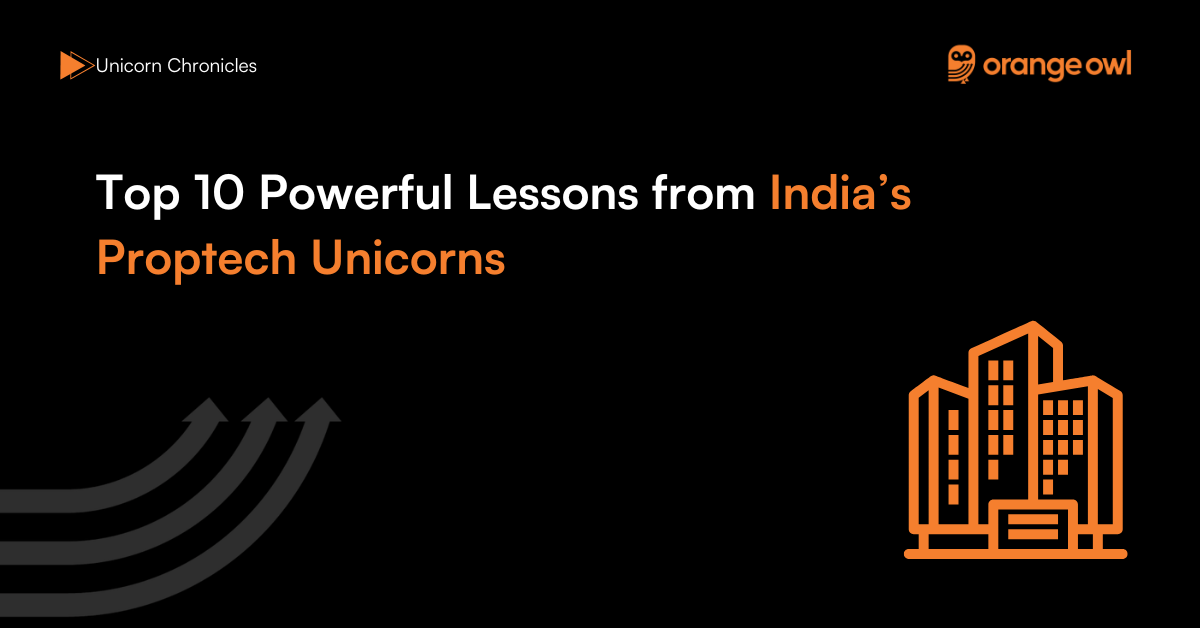Unlock Top 10 B2B Performance Marketing Predictions and Trends for 2025
Vivek Goel
December 16, 2024

Table of Contents
Introduction
As we near 2025, the landscape of performance marketing is rapidly evolving, especially within the B2B sector. With technological advancements and changes in digital consumer behaviour, B2B marketers need to stay ahead of emerging trends to effectively leverage performance marketing strategies. This blog post explores the top ten B2B performance marketing predictions and trends for 2025, providing detailed insights and actionable steps to enhance your marketing ROI.
10 B2B Performance Marketing Predictions and Trends
Prediction 1. Greater Integration of AI and Machine Learning
- Insight: AI and machine learning will further refine targeting and optimization in performance marketing, leading to more efficient campaigns and better allocation of budgets.
- Actionable Steps:
- Implement AI-driven tools for predictive analytics to anticipate market trends and customer behaviours.
- Use machine learning algorithms to optimize bid management and ad placements in real time.
- Example: A B2B software company could use AI to dynamically adjust its PPC campaigns based on prospective customers’ interaction patterns.
Prediction 2. Rise of Account-Based Marketing (ABM) in Performance Channels
- Insight: ABM will become more prominent in performance marketing as companies seek to personalize their advertising efforts to high-value accounts.
- Actionable Steps:
- Tailor ad content and messaging to specific industries or companies within your target market.
- Leverage data and insights from CRM to create targeted and personalized ad campaigns.
- Example: A B2B financial services firm might develop specific LinkedIn ad campaigns targeting CFOs and financial directors of large enterprises.
Prediction 3. Increased Focus on Customer Lifetime Value (CLV)
- Insight: Shifting focus from short-term gains to long-term customer relationships and CLV will redefine performance metrics and success benchmarks.
- Actionable Steps:
- Adjust performance marketing strategies to focus on nurturing leads and increasing repeat business rather than just initial conversions.
- Implement tracking and analytics that measure long-term engagement and revenue per customer.
- Example: A B2B equipment manufacturer could focus on upselling and cross-selling through retargeting campaigns aimed at existing customers.

Prediction 4. Privacy-First Advertising
- Insight: With increasing data privacy regulations and the phasing out of third-party cookies, performance marketers will need to adopt new, privacy-first strategies to reach their audiences.
- Actionable Steps:
- Invest in first-party data collection strategies such as lead forms and newsletters.
- Explore contextual advertising and other targeting methods that do not rely on personal data.
- Example: A B2B healthcare company might use contextual targeting to place ads on relevant medical and health policy sites instead of relying on behavioural data.
Prediction 5. Expansion of Omnichannel Strategies
- Insight: Omnichannel performance marketing will become essential as B2B buyers expect a seamless experience across all digital touchpoints.
- Actionable Steps:
- Develop a cohesive strategy that aligns messaging across all channels, from social media to email to online ads.
- Utilize cross-channel analytics to understand the customer journey and optimize marketing efforts.
- Example: A B2B SaaS company could integrate its email marketing efforts with its social media ads to ensure a cohesive narrative and multiple touchpoints with prospects.
Prediction 6. Performance Influencer Marketing
- Insight: Influencer marketing will evolve with a stronger focus on measurable ROI, making it a key component of performance marketing strategies.
- Actionable Steps:
- Partner with influencers who have a proven track record of influencing B2B purchasing decisions.
- Set clear performance metrics for influencer campaigns, such as lead generation or direct sales.
- Example: A B2B software provider might collaborate with well-known industry experts to create video content that can be tracked for leads and conversions.
Prediction 7. Enhanced Use of Visual and Interactive Content
- Insight: Visual and interactive content in ads, such as augmented reality (AR) or interactive videos, will enhance engagement and improve performance metrics.
- Actionable Steps:
- Develop interactive ads that engage users and encourage them to spend more time interacting with your content.
- Measure the impact of interactive elements on conversion rates and engagement metrics.
- Example: A B2B architecture firm could use AR in its ads to allow potential clients to visualize building projects in their real-world environment.
Prediction 8. Sophisticated Ad Fraud Detection
- Insight: As ad budgets increase, so does the potential for fraud. Sophisticated fraud detection tools will become essential to protect investments and ensure genuine engagement.
- Actionable Steps:
- Implement advanced fraud detection software to monitor discrepancies in campaign performance.
- Regularly audit and review performance reports for unusual activity.
- Example: A B2B marketing agency could use automated tools to continuously check for click fraud or fake lead generation across its campaigns.
Prediction 9. Sustainability in Performance Marketing
- Insight: With a growing emphasis on corporate responsibility, performance marketing campaigns must reflect sustainability values.
- Actionable Steps:
- Promote sustainable practices through your marketing campaigns.
- Highlight your company’s commitment to sustainability in ad content and messaging.
- Example: A B2B renewable energy company could emphasize its impact on reducing carbon emissions in its PPC campaigns.
Prediction 10. Adaptive Budget Allocation
- Insight: Dynamic budget allocation based on real-time performance data will become the norm, allowing for more agility in marketing spend.
- Actionable Steps:
- Use real-time data to adjust budgets and resources towards high-performing campaigns and channels.
- Implement machine learning algorithms to automate budget adjustments based on campaign performance.
- Example: A B2B logistics company could use performance data to dynamically shift ad spend between search ads, social media, and programmatic, depending on which channel performs best seasonally.
Conclusion
For B2B companies, leveraging these trends in performance marketing will be key to maximizing ROI and staying competitive in a digital-first marketplace. By embracing these predictions and continuously adapting your strategies, you can drive better results and build stronger, more profitable relationships with your business customers in 2025 and beyond.
Frequently Asked Questions(FAQs) on B2B Performance Marketing Predictions
Performance marketing in the B2B context focuses on measurable outcomes such as lead generation, sales, or customer acquisition. It leverages digital channels like search engines, social media, and programmatic advertising, ensuring that marketing spend is directly tied to tangible business results. Unlike traditional marketing, B2B performance marketing prioritizes tracking and optimizing campaigns to maximize ROI while targeting decision-makers in other businesses.
AI is revolutionizing performance marketing by enabling smarter targeting and campaign optimization. It helps marketers predict customer behavior, segment audiences more accurately, and personalize ad experiences. Additionally, AI-powered tools automate processes like bid management and real-time adjustments, saving time and improving results. As AI evolves, its ability to analyze vast amounts of data will help B2B marketers create more impactful campaigns.
ABM aligns performance marketing with a targeted approach by focusing on high-value accounts rather than broad audience segments. It allows businesses to create highly personalized ad content and campaigns tailored to specific industries or companies. This strategy ensures that marketing efforts are directed toward the most relevant prospects, increasing conversion rates and driving higher ROI for B2B businesses.
CLV shifts the focus from short-term gains to the long-term profitability of customer relationships. By emphasizing CLV, performance marketers can prioritize nurturing existing customers and encouraging repeat business. This approach not only maximizes revenue over time but also strengthens customer loyalty. Tracking CLV enables businesses to make data-driven decisions about where to allocate marketing resources effectively.
With stricter data privacy regulations and the phase-out of third-party cookies, businesses must adopt privacy-first strategies. Collecting first-party data through direct interactions, such as email sign-ups or lead forms, becomes essential. Contextual advertising, which targets users based on the content they consume rather than personal data, is another effective approach. These strategies ensure compliance while maintaining effective targeting capabilities.
B2B buyers interact with brands across multiple touchpoints, from social media to email and search ads. An omnichannel approach ensures that the messaging and experience remain consistent across all platforms. This seamless integration helps build trust, improve brand recall, and optimize the customer journey. By leveraging cross-channel analytics, marketers can refine strategies and enhance overall campaign performance
Sustainability has become a critical value for businesses and their customers. Integrating sustainable practices into performance marketing campaigns helps showcase a company’s commitment to environmental and social responsibility. Highlighting eco-friendly initiatives in ad content not only resonates with conscious consumers but also strengthens brand reputation. For example, emphasizing carbon reduction in marketing messages can attract businesses prioritizing sustainability.
Visual and interactive content like AR, VR, and interactive videos engage audiences more effectively than static formats. They capture attention, encourage longer interaction times, and convey complex information in an engaging way. For example, AR can help B2B prospects visualize product applications, while interactive videos can guide them through use cases, driving higher engagement and conversion rates.
Advanced analytics tools provide deeper insights into campaign performance by tracking engagement metrics like click-through rates, session durations, and conversion paths. These tools allow B2B marketers to identify which strategies and channels yield the best results, enabling more informed decision-making. By continuously analyzing data, marketers can refine campaigns, allocate budgets effectively, and demonstrate ROI to stakeholders with precision.
Adaptive budget allocation ensures that resources are directed toward the most effective channels and campaigns in real-time. By using performance data to identify high-performing strategies, businesses can dynamically adjust their spend, maximizing returns. For instance, shifting budgets between search ads and social media campaigns based on seasonal performance can optimize results without increasing overall spending.


